In cities across China, the country’s central bank has begun rolling out the e-renminbi—an all-digital version of its paper currency that can be accessed and accepted by merchants and consumers without an internet connection, credit or even a bank account. Already having conducted more than $5 billion in e-renminbi transactions, China has opened its digital currency up to foreigners. Next year, when Beijing hosts the Winter Olympic Games, authorities are expecting to let the world test drive its technological achievement.
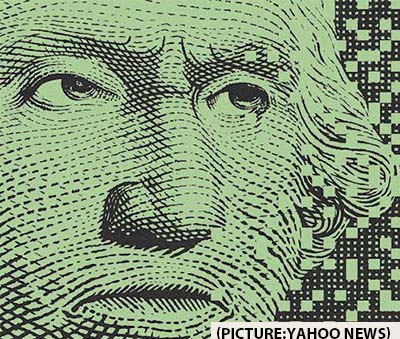 The U.S., by contrast, is having trouble even concluding its multi-year exploration into the possibility of an e-dollar. In fact, an upcoming Federal Reserve paper on a potential U.S. digital currency won’t take a position on whether the central bank of the United States will, or even should, create one. Instead, Federal Reserve Chair Jerome Powell said in recent testimony to Congress, this paper will “begin a major public consultation on central bank digital currencies…” (Once planned for July, the paper’s release has since been moved to September.)
The U.S., by contrast, is having trouble even concluding its multi-year exploration into the possibility of an e-dollar. In fact, an upcoming Federal Reserve paper on a potential U.S. digital currency won’t take a position on whether the central bank of the United States will, or even should, create one. Instead, Federal Reserve Chair Jerome Powell said in recent testimony to Congress, this paper will “begin a major public consultation on central bank digital currencies…” (Once planned for July, the paper’s release has since been moved to September.)
Once the world leader in digital payments and technological innovation, the U.S. is being outpaced by its top global adversary as well as much of the industrialized and the developing world. The Bahamas recently announced the integration of its digital Sand Dollar into a stock exchange, while Australia, Malaysia, Singapore and South Africa are moving forward with the world’s first cross-border central bank digital currency exchange program led by the Bank for International Settlements (BIS), which is known as the central bank of central banks.
Such developments have been somewhat outshined by El Salvador’s recent decision to make bitcoin a legally accepted currency, which few expect to make significant impact in the payment space. But outside of the cryptocurrency space, nations around the globe are making significant strides in the development of the digital future of money — supported by governments and backed by powerful central banks. Leadership in this space will have implications for more than just payments: geopolitical ambitions, economic growth, financial inclusion and the very nature of money could all be dictated by who leads the charge and how.
“I don’t think the U.S. is aware there is a race”
Digital currencies are the next wave in the “evolution of the nature of money in the digital economy,” Hyun Song Shin, economic adviser and co-leader of the Monetary and Economic Department at the Bank for International Settlements, tells TIME. As more of our world migrates from physical brick-and-mortar to wireless and cloud-based, the way we pay for things is changing as well. A central bank digital currency would operate just like cash, but instead of having to carry it in a physical wallet or put it into a bank account, it would be stored and accessed digitally. Not only could U.S.-backed digital currency facilitate easier, modern banking, it could prove vital in protecting American international influence.
Late to the party, the U.S. is “stepping up its research and public engagement” on digital currencies, the Federal Reserve says, including forming working groups on cryptocurrency and other kinds of digital money, and experimenting with technology that would be central to producing a digital dollar. The Fed’s regional Boston branch is overseeing these efforts with the Massachusetts Institute of Technology on what’s known as Project Hamilton. But the path towards a digital U.S. dollar has met many challenges, skeptics and outright opponents. All while China, and other countries, push forward.
Lagging behind the world
Just how far behind is the U.S. in the development of a central bank-issued digital currency (CBDC)? According to global accounting firm PwC’s inaugural CBDC global index, which tracks various CBDCs’ project status from research to development and production, the U.S. ranks 18th in the world. America’s potential efforts trail countries like Sweden, South Korea and China but also countries like the Bahamas, Ecuador, Eastern Caribbean and Turkey. China, with its government’s hyperfocus on maintaining control and overseeing data, has been working to develop a CBDC for almost a decade.
And the U.S. is probably not close to catching up. Analysts like Harvard economics professor Kenneth Rogoff, who study monetary policy and digital currencies, estimate that the U.S. could be at least a decade away from issuing a digital dollar backed by the Fed. In that time, Rogoff argued in an op-ed earlier this year, the modernization of China’s financial markets and reduction or removal of its currency controls “could deal the dollar’s status a painful blow.”
China has already largely moved away from coin and paper currency; Chinese consumers have racked up more than $41 trillion in mobile transactions, according to a recent research paper from the Brookings Institution, with the lion’s share (92%) going through digital payment processors WeChat Pay and Alipay.
“The reason you could say the U.S. is behind in the digital currency race is I don’t think the U.S. is aware there is a race,” Yaya Fanusie, an Adjunct Senior Fellow at the Center for a New American Security, and a former CIA analyst, tells TIME in an interview. “A lot of policymakers are looking at it and concerned…but even with that I just don’t think there’s this sense of urgency because the risk from China is not an immediate threat.” Not only is the U.S. running significantly behind in the development of a CBDC, we are trailing the rest of the world in digital payments broadly.
Kenya, for example, has almost fully digitized its economy through its digital currency and payment system MPESA, making transactions free and almost instantaneous. India’s Unified Payments Interface (UPI) allows users to transfer money instantly between bank accounts with no cost. Brazil’s PIX facilitates the transfer of money between people and companies in up to 10 seconds. All of these programs work through and are overseen by the countries’ central banks rather than commercial banks or other private companies.
What’s holding the U.S. back?
Critics argue CBDCs are simply a solution in search of a problem and potentially harmful. Many see support from the banking sector as vital to the success of a digital U.S. dollar, however commercial banks in the U.S. have taken a largely adversarial stance. “The proposed benefits of CBDCs to international competitiveness and financial inclusion are theoretical, difficult to measure and may be elusive,” the American Bankers Association said in a statement at a recent congressional hearing on digital currencies. “While the negative consequences for monetary policy, financial stability, financial intermediation, the payments system, and the customers and communities that banks serve could be severe.”
The Bank Policy Institute, which lobbies on behalf of the country’s largest banks, went so far as to argue that neither the Fed nor the U.S. Treasury even has the constitutional authority to issue a digital currency. Commercial banks dominate the U.S. financial system to such a degree that unraveling them would be ostensibly impossible, experts say, they also would be a powerful adversary. Former Goldman Sachs managing director Nomi Prins notes banks have clearly seen the writing on the wall.
“Banks are centralized middlemen with respect to financial transactions,” Prins, author of Collusion: How Central Bankers Rigged The World, tells TIME. “The more popular cryptocurrency or digital currency becomes, the fewer profits the banking system can reap from traditional services and verification methods that allow them to hold, take or use their customers’ money, and the more financial power they stand to lose as a result.” Even disruptive financial technologies like PayPal, Venmo and Zelle work through the banking system, rather than around it, thanks in large part to the banks’ power.
Central bankers also generally have concluded that commercial banks are a necessary piece of a potential CBDC ecosystem, thanks to their pre-existing regulatory guardrails and ability to move money. Top policymakers at the Fed, including influential Vice Chair for Supervision Randal Quarles, have joined the banking industry in arguing that a digital dollar “could pose significant and concrete risks” and that the potential benefits “are unclear.” Fed Governor Christopher Waller said in August he was “skeptical that a Federal Reserve CBDC would solve any major problem confronting the U.S. payment system,” in a recent speech he titled “CBDC: A Solution in Search of a Problem?” Further, there’s no central U.S. authority with direct oversight or responsibility for any of this.
In addition to the Fed, the Office of the Comptroller of the Currency, the Securities and Exchange Commission, the Federal Trade Commission, the Consumer Financial Protection Bureau, the Federal Deposit Insurance Corporation, Office of Thrift Supervision, Financial Stability Oversight Council, Federal Financial Institutions Examination Council and the Office of Financial Research would all have some stake in the development of a digital currency backed by the central bank, to say nothing of state and regional authorities.
“The U.S. has an active congressional debate, which is beneficial and very important,” Federal Reserve Governor Lael Brainard tells TIME in an interview. “But the U.S. also has a diffusion of regulatory responsibility with no single payments regulator at the federal level, which is not as helpful. That diffusion of responsibility is part of what creates the lags that our system is working through.” None of this exists in China where the Chinese Communist Party oversees the central bank, commercial banks and their regulators and is unconcerned with privacy.
How a downgraded dollar could hamstring U.S. influence
An American CBDC could have lasting geopolitical impact and curb a longstanding international effort to reduce reliance on the mighty U.S. dollar. “Why we should care about this is that the U.S. financial system is not intrinsically dominant,” Fanusie says. “Other countries, both allies and adversaries, are sincerely interested in finding ways to decrease their dependence on the dollar.” With the U.S. dollar as the world’s reserve and primary funding currency, the U.S. can restrict access to funding from financial markets, limit countries’ ability to sell their natural resources and hinder or block individuals’ access to the banking sector.
“Other countries, both allies and adversaries, are sincerely interested in finding ways to decrease their dependence on the dollar”
While dollar dominance has rankled much of the world for decades, there has been no suitable replacement for the U.S., with its massive economy, sophisticated banking system and sprawling international presence. China is in the midst of a long-term push to simultaneously grow its financial markets and internationalize its currency. Both have the end goal of allowing China and its allies to limit the ability of the U.S. to enforce its will through economic actions like sanctions. Fanusie wrote in a January report that being the first major economy to roll out a digital currency is “part of China’s geopolitical ambitions.”
However, the renminbi will not become the world’s reserve currency — at least, not any time soon. But what China has done by being in the forefront of CBDC development is put itself in position to take the lead on development and implementation of rules and regulations for digital currencies on a global scale. “While America led the global revolution in payments half a century ago with magnetic striped credit and debit cards, China is leading the new revolution in digital payments,” writes Brookings’ economic studies fellow Aaron Klein.
Why should central banks offer digital currencies?
Over the past decade, digital currencies, including cryptocurrency and “stablecoins,” have sprung up like weeds. Some purport to be just as safe as dollars, but are backed by questionable assets. In a crisis regulators worry they could fluctuate wildly in value or lose their value altogether. Having central banks, which are responsible for the printing and circulation of coins and paper money, issue digital currencies is in part a reaction to this private sector activity, Shin says, “accelerated by the potential encroachment of private digital currencies, and the need to preserve the role of money as a public good.”
“The status quo is not an option”
Notably, a U.S. digital currency could provide benefits to everyday people. It could increase financial inclusion and fix flaws in current payments systems, Shin adds, citing findings of a recent BIS study.
For example, transferring money between U.S.-based bank accounts, even those held by the same person, can take days. The process can be even longer when crossing international borders. Credit and debit card transactions similarly don’t settle for days and come with significant fees for merchants, who sometimes pass them on to customers. CBDCs could grant universal access to the banking sector and quickly facilitate the distribution of paychecks and government funds, reducing the need for costly bank workarounds like check cashing and payday loans.
Championing CBDCs
Brainard has been pushing the Fed to move on a digital currency for years, but there was little urgency from others at the Fed or in Congress. Companies developing their own currencies, consumers investing in cryptocurrency and the COVID-19 pandemic making paper notes anathema to many Americans changed that. Before COVID-19, Facebook’s Libra project (now known as Diem) showed lawmakers and central bankers the potential for a private company to step in and fill the void by effectively minting its own currency that could be spent by users around the world.
“The status quo is not an option,” Diem co-creator David Marcus said at the International Monetary Fund’s 2019 fall meeting. “Whether it’s Libra or something else, the world is going to change in a profound way.” Brainard, for one, has taken notice. “My own thinking is that stablecoins and related private sector initiatives are moving very rapidly, which makes it incumbent on us to move more rapidly,” she tells TIME. “That is why I have been pushing to advance outreach, cross-border engagement, and policy and technology research for several years now.” So-called stablecoins — unregulated digital currencies created by private companies that purport to represent dollars but are completely unregulated — have become a significant worry for lawmakers and shown the importance of considering tying currency to a central bank.
“It’s getting harder and harder for community banks to compete for new customers when big tech companies can afford to spend billions on marketing and technology,” Sen. Sherrod Brown, who chairs the Senate Banking Committee, tells TIME. “But many of these new ‘fintech’ products don’t come with the consumer protections, federal backing or customer service and relationships with the community that small banks and credit unions provide.”
During a hearing on digital currencies in June, Sen. Elizabeth Warren, the ranking member of the Subcommittee on Financial Institutions and Consumer Protection, compared stablecoins to worthless “wildcat notes” that were issued by speculators in the 19th century. Her expert at that hearing, Lev Menand, an Academic Fellow and Lecturer in Law at Columbia Law School, went further in his testimony, calling stablecoins “dangerous to both their users and … to the broader financial system.”
With private companies pushing deeper into the digital currency space, rival countries seeking to seize leadership and a public that is moving further away from physical currency, the U.S. is facing a world in which it may not control or even lead the world’s payment systems. That would make the future of money look very different from the past.
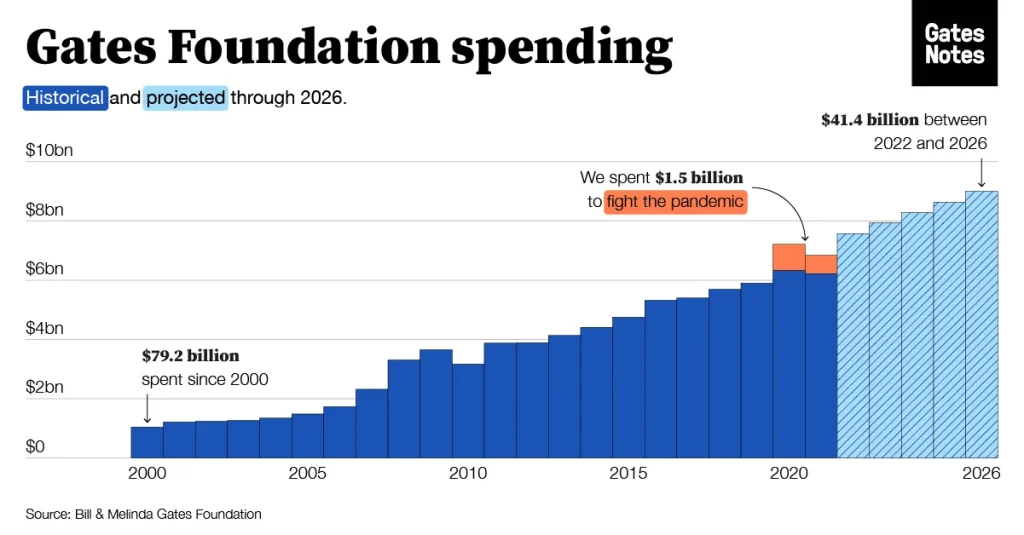 Bill Gates is moving $20 billion of his wealth into the endowment of the Bill and Melinda Gates Foundation, which is ramping up its spending in the face of global challenges, including the pandemic and the war in Ukraine, media reports said.
Bill Gates is moving $20 billion of his wealth into the endowment of the Bill and Melinda Gates Foundation, which is ramping up its spending in the face of global challenges, including the pandemic and the war in Ukraine, media reports said. 
 It’s a sharp departure from the previous two years, when the fortunes of the ultra-rich swelled as governments and central banks unleashed unprecedented stimulus measures in the wake of the Covid-19 pandemic, juicing the value of everything from tech companies to cryptocurrencies.
It’s a sharp departure from the previous two years, when the fortunes of the ultra-rich swelled as governments and central banks unleashed unprecedented stimulus measures in the wake of the Covid-19 pandemic, juicing the value of everything from tech companies to cryptocurrencies. At least at first,
At least at first, 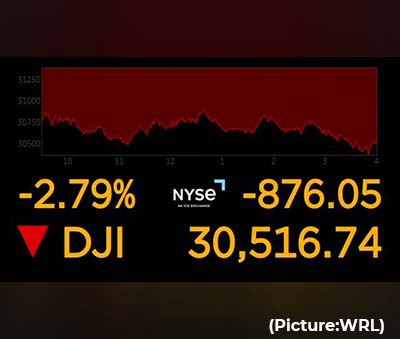 “After holding their breath for nearly a week awaiting the US CPI report for May, investors exhaled in exasperation as inflation came in hotter than expected,” Sam Stovall, chief investment strategist at CFRA, said in a note to clients Monday morning.
“After holding their breath for nearly a week awaiting the US CPI report for May, investors exhaled in exasperation as inflation came in hotter than expected,” Sam Stovall, chief investment strategist at CFRA, said in a note to clients Monday morning.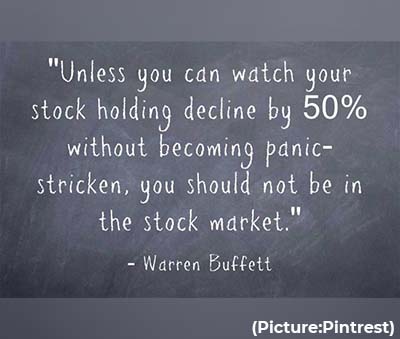 He said that when Berkshire’s stock fell, there was nothing wrong with the company. He said that the mind of the investor should be right. Otherwise, your life will be spent in buying and selling shares at the wrong time and you will continue to cry for loss. Investors take decisions on the advice of others when prices fluctuate.
He said that when Berkshire’s stock fell, there was nothing wrong with the company. He said that the mind of the investor should be right. Otherwise, your life will be spent in buying and selling shares at the wrong time and you will continue to cry for loss. Investors take decisions on the advice of others when prices fluctuate.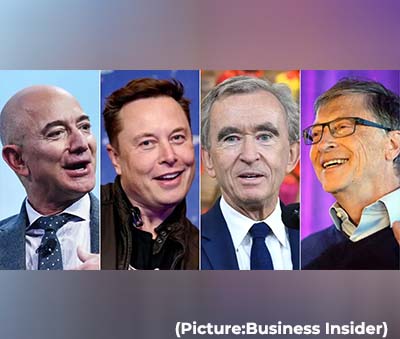 Billionaires have seen their total
Billionaires have seen their total 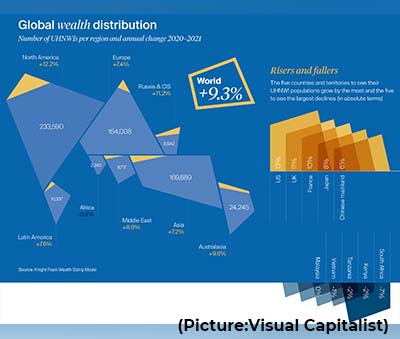 The fortunes of food and energy billionaires have risen by $453 billion in the last two years, equivalent to $1 billion every two days, says Oxfam.
The fortunes of food and energy billionaires have risen by $453 billion in the last two years, equivalent to $1 billion every two days, says Oxfam. Toyota is aligning its own green targets with India’s ambitions of becoming a manufacturing hub though the switch to clean transport in the South Asian nation is slower than other countries such as China and the U.S. Expensive price tags, lack of options in electric models and insufficient charging stations have led to sluggish adoption of battery vehicles in India.
Toyota is aligning its own green targets with India’s ambitions of becoming a manufacturing hub though the switch to clean transport in the South Asian nation is slower than other countries such as China and the U.S. Expensive price tags, lack of options in electric models and insufficient charging stations have led to sluggish adoption of battery vehicles in India.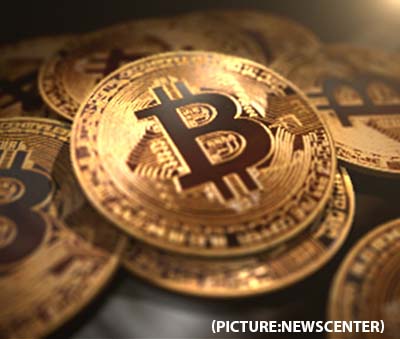 Central to bitcoin’s technology is the process through which transactions are verified and then recorded on what’s known as the blockchain. Computers connected to the bitcoin network race to solve complex mathematical calculations that verify the transactions, with the winner earning newly minted bitcoins as a reward. Currently, when a machine solves the puzzle, its owner is rewarded with 6.25 bitcoins — worth about $260,000 total. The system is calibrated to release 6.25 bitcoins every 10 minutes.
Central to bitcoin’s technology is the process through which transactions are verified and then recorded on what’s known as the blockchain. Computers connected to the bitcoin network race to solve complex mathematical calculations that verify the transactions, with the winner earning newly minted bitcoins as a reward. Currently, when a machine solves the puzzle, its owner is rewarded with 6.25 bitcoins — worth about $260,000 total. The system is calibrated to release 6.25 bitcoins every 10 minutes.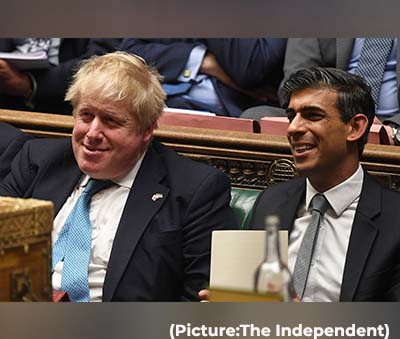 Murthy is said to own a 0.9 per cent stake in Infosys, which has been calculated as being worth 500 million pounds. Annual dividends from this holding is estimated to be 11.6 million pounds. On Thursday, it emerged she pays just 30,000 pounds a year in the UK on the British income.
Murthy is said to own a 0.9 per cent stake in Infosys, which has been calculated as being worth 500 million pounds. Annual dividends from this holding is estimated to be 11.6 million pounds. On Thursday, it emerged she pays just 30,000 pounds a year in the UK on the British income. “Expectation is that inflation could remain elevated following the recent rise in energy and food prices. On the other hand, industrial production could grow at a slower pace in January and could further weigh on the currency.”
“Expectation is that inflation could remain elevated following the recent rise in energy and food prices. On the other hand, industrial production could grow at a slower pace in January and could further weigh on the currency.”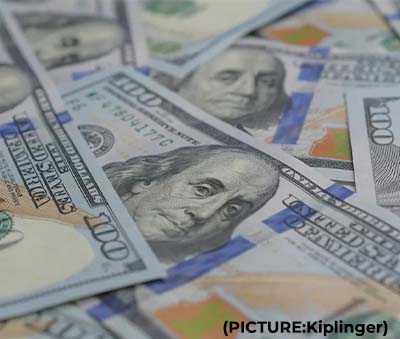 Nonrevolving credit, such as student or car loans, grew by 8.4% to $3.4 trillion, also outpacing a smaller January gain.
Nonrevolving credit, such as student or car loans, grew by 8.4% to $3.4 trillion, also outpacing a smaller January gain.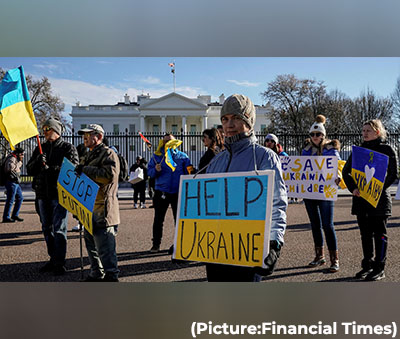 Withdrawal of major Western transnational companies – such as Shell, McDonald’s and Apple – will undoubtedly hurt many Russians – not only oligarchs, their ostensible target.
Withdrawal of major Western transnational companies – such as Shell, McDonald’s and Apple – will undoubtedly hurt many Russians – not only oligarchs, their ostensible target.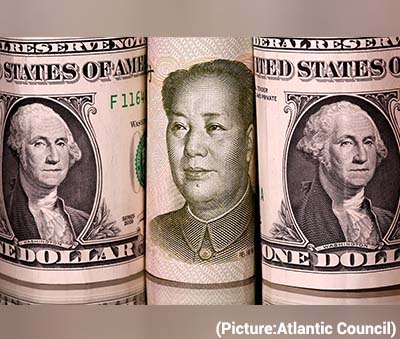 Policymakers stress these are early days yet, and there is a lot that needs to be hammered out. All in all, the transactions conducted with digital dollars probably wouldn’t seem too different from existing private alternatives that allow us to pay for things by bringing our smartphones next to digital readers.
Policymakers stress these are early days yet, and there is a lot that needs to be hammered out. All in all, the transactions conducted with digital dollars probably wouldn’t seem too different from existing private alternatives that allow us to pay for things by bringing our smartphones next to digital readers.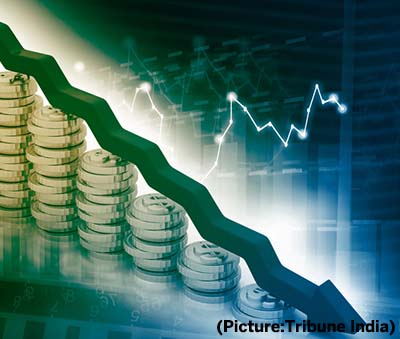 The report also noted that the Covid-19 pandemic has raised global income inequality, partly reversing the decline that was achieved over the previous two decades, Xinhua news agency reported.
The report also noted that the Covid-19 pandemic has raised global income inequality, partly reversing the decline that was achieved over the previous two decades, Xinhua news agency reported.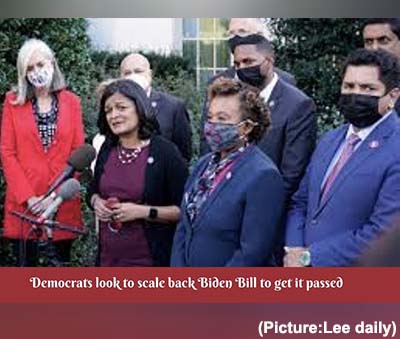 “That is the way forward here,” said Ben Ritz, director of the Center for Funding America’s Future at the Progressive Policy Institute, who has advocated for a bill with fewer items. “Most of the party is starting to come around to that,” Ritz added. Some Democrats think their party made a mistake in going too large in the first place.
“That is the way forward here,” said Ben Ritz, director of the Center for Funding America’s Future at the Progressive Policy Institute, who has advocated for a bill with fewer items. “Most of the party is starting to come around to that,” Ritz added. Some Democrats think their party made a mistake in going too large in the first place.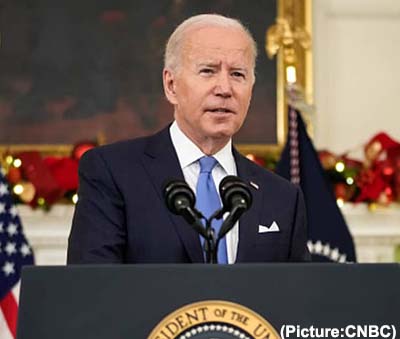 As we prepare for the return to repayment in May, we will continue to provide tools and supports to borrowers so they can enter into the repayment plan that is responsive to their financial situation, such as an income-driven repayment plan. Students and borrowers will always be at the center of our work at the Department, and we are committed to not only ensuring a smooth return to repayment, but also increasing accountability and stronger customer service from our loan servicers as borrowers prepare for repayment.”
As we prepare for the return to repayment in May, we will continue to provide tools and supports to borrowers so they can enter into the repayment plan that is responsive to their financial situation, such as an income-driven repayment plan. Students and borrowers will always be at the center of our work at the Department, and we are committed to not only ensuring a smooth return to repayment, but also increasing accountability and stronger customer service from our loan servicers as borrowers prepare for repayment.” Supply chain bottlenecks, with COVID-19-related worker absences at factories and ports still high, are also leading to low supplies and higher prices for consumer electronics, appliances and many other products.
Supply chain bottlenecks, with COVID-19-related worker absences at factories and ports still high, are also leading to low supplies and higher prices for consumer electronics, appliances and many other products.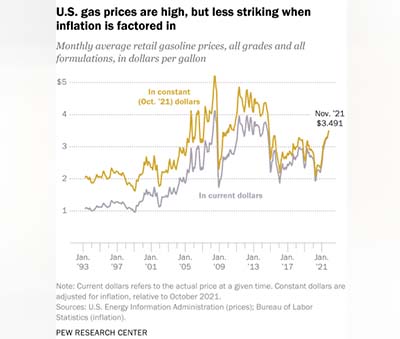 Also, the volatility of gas prices means they can go down as sharply and as suddenly as they go up. In the spring of 2020, as the
Also, the volatility of gas prices means they can go down as sharply and as suddenly as they go up. In the spring of 2020, as the 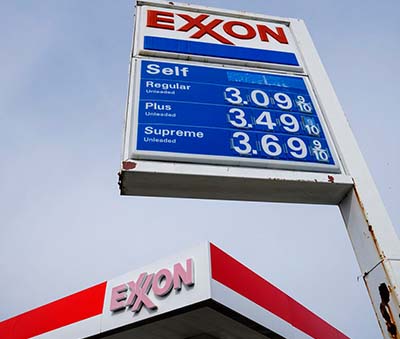 Where you buy gas also matters. Much of the U.S. petroleum industry is concentrated along the Gulf Coast, making it perhaps unsurprising that gas tends to be cheapest there. The average price in that region was $3.072 a gallon in late November, and in Texas it was also a hairsbreadth above $3.
Where you buy gas also matters. Much of the U.S. petroleum industry is concentrated along the Gulf Coast, making it perhaps unsurprising that gas tends to be cheapest there. The average price in that region was $3.072 a gallon in late November, and in Texas it was also a hairsbreadth above $3. The growing pools of cash are meant to entice young workers and hold on to existing staff at a time
The growing pools of cash are meant to entice young workers and hold on to existing staff at a time 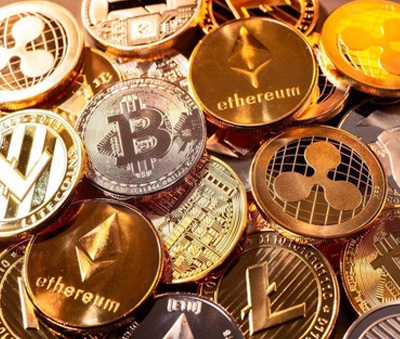 But the CBDC is the official cryptocurrency issued by the Central Bank of India. This is the main difference between other cryptocurrencies and CDBC. The CBDC (Central Bank Digital Currency) will also be marketed through the blockchain technology as done by other virtual currencies . It is likely to be a digital token or electronic form of the current currency. The Reserve Bank of India will be in charge of supervising and monitoring the official crypto of the Indian government. Digital money cannot be withdrawn as we usually withdraw from banks and ATMs. Their transactions will be through digital platforms. It is not yet clear whether it will be listed on other crypto exchanges.
But the CBDC is the official cryptocurrency issued by the Central Bank of India. This is the main difference between other cryptocurrencies and CDBC. The CBDC (Central Bank Digital Currency) will also be marketed through the blockchain technology as done by other virtual currencies . It is likely to be a digital token or electronic form of the current currency. The Reserve Bank of India will be in charge of supervising and monitoring the official crypto of the Indian government. Digital money cannot be withdrawn as we usually withdraw from banks and ATMs. Their transactions will be through digital platforms. It is not yet clear whether it will be listed on other crypto exchanges.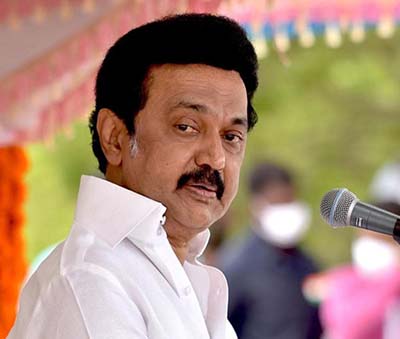 On honoring him his new crown, CM Stalin praised Rangaswami for his achievements in the US.
On honoring him his new crown, CM Stalin praised Rangaswami for his achievements in the US.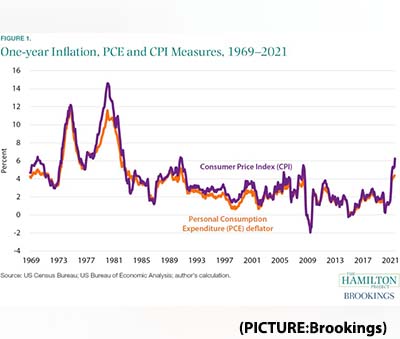
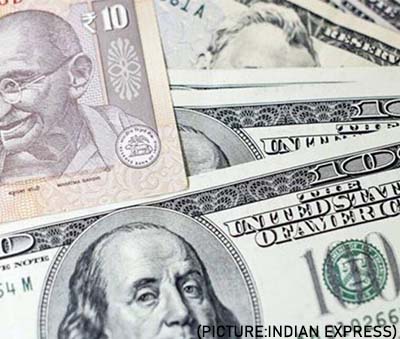 India is followed by China, Mexico, the Philippines, and Egypt, the report said. In India, remittances are projected to grow 3% in 2022 to $89.6 billion, reflecting a drop in overall migrant stock, as a large proportion of returnees from the Arab countries await return, it said.
India is followed by China, Mexico, the Philippines, and Egypt, the report said. In India, remittances are projected to grow 3% in 2022 to $89.6 billion, reflecting a drop in overall migrant stock, as a large proportion of returnees from the Arab countries await return, it said. Inflation is when the average price of virtually everything consumers buy goes up. Food, houses, cars, clothes, toys, etc. To afford those necessities, wages have to rise too.
Inflation is when the average price of virtually everything consumers buy goes up. Food, houses, cars, clothes, toys, etc. To afford those necessities, wages have to rise too. The U.S., held back by more muted increases in property prices, saw its net worth more than double over the period, to $90 trillion.
The U.S., held back by more muted increases in property prices, saw its net worth more than double over the period, to $90 trillion. Jes Staley stepped down from Barclays, which is Britain’s third-biggest bank by market value, after a probe into his relationship with financier and sex offender Jeffrey Epstein. The bank said Staley will get a 2.5 million pound ($3.5 million) payout and receive other benefits for a year.
Jes Staley stepped down from Barclays, which is Britain’s third-biggest bank by market value, after a probe into his relationship with financier and sex offender Jeffrey Epstein. The bank said Staley will get a 2.5 million pound ($3.5 million) payout and receive other benefits for a year. Her discussions with Sleyster revolved around the reforms towards capital bond market, investor charter and other initiatives.
Her discussions with Sleyster revolved around the reforms towards capital bond market, investor charter and other initiatives.  The International Consortium of Investigative Journalists, a Washington, D.C.-based network of reporters and media organizations, said the files are linked to about 35 current and former national leaders, and more than 330 politicians and public officials in 91 countries and territories. It did not say how the files were obtained, and Reuters could not independently verify the allegations or documents detailed by the consortium.
The International Consortium of Investigative Journalists, a Washington, D.C.-based network of reporters and media organizations, said the files are linked to about 35 current and former national leaders, and more than 330 politicians and public officials in 91 countries and territories. It did not say how the files were obtained, and Reuters could not independently verify the allegations or documents detailed by the consortium. Currently, India has 237 billionaires, up 58 compared to last year. “While ‘Chemicals’ and ‘Software’ sectors added the greatest number of new entrants to the list, Pharma is still at number one and has contributed 130 entrants to the list. The youngest in the list is aged 23, three years younger than the youngest last year.” Furthermore, the list report pointed out that Reliance Industries’ Chairman and Managing Director Mukesh Ambani continued to be the richest man in India for the 10th consecutive year with a wealth of Rs 718,000 crore.
Currently, India has 237 billionaires, up 58 compared to last year. “While ‘Chemicals’ and ‘Software’ sectors added the greatest number of new entrants to the list, Pharma is still at number one and has contributed 130 entrants to the list. The youngest in the list is aged 23, three years younger than the youngest last year.” Furthermore, the list report pointed out that Reliance Industries’ Chairman and Managing Director Mukesh Ambani continued to be the richest man in India for the 10th consecutive year with a wealth of Rs 718,000 crore. The U.S., by contrast, is having trouble even concluding its multi-year exploration into the possibility of an e-dollar. In fact, an upcoming Federal Reserve paper on a potential U.S. digital currency won’t take a position on whether the central bank of the United States will, or even should, create one. Instead, Federal Reserve Chair Jerome Powell said in recent testimony to Congress, this paper will “begin a major public consultation on central bank digital currencies…” (Once planned for July, the paper’s release has since been moved to September.)
The U.S., by contrast, is having trouble even concluding its multi-year exploration into the possibility of an e-dollar. In fact, an upcoming Federal Reserve paper on a potential U.S. digital currency won’t take a position on whether the central bank of the United States will, or even should, create one. Instead, Federal Reserve Chair Jerome Powell said in recent testimony to Congress, this paper will “begin a major public consultation on central bank digital currencies…” (Once planned for July, the paper’s release has since been moved to September.) The U.S. Federal Reserve, by contrast, has largely stayed on the sidelines. This could be a lost opportunity. The United States should develop a digital dollar, not because of what other countries are doing, but because the benefits of a digital currency far outweigh the costs. One benefit is security. Cash is vulnerable to loss and theft, a problem for both individuals and businesses, whereas digital currencies are relatively secure. Electronic hacking does pose a risk, but one that can be managed with new technologies. (As it happens, offshoots of Bitcoin’s technology
The U.S. Federal Reserve, by contrast, has largely stayed on the sidelines. This could be a lost opportunity. The United States should develop a digital dollar, not because of what other countries are doing, but because the benefits of a digital currency far outweigh the costs. One benefit is security. Cash is vulnerable to loss and theft, a problem for both individuals and businesses, whereas digital currencies are relatively secure. Electronic hacking does pose a risk, but one that can be managed with new technologies. (As it happens, offshoots of Bitcoin’s technology 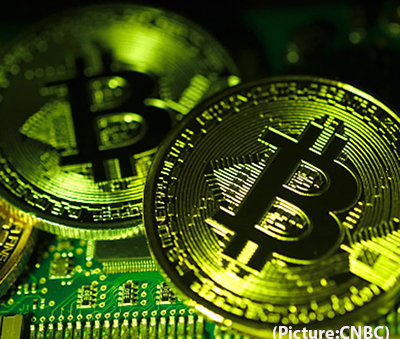 For many crypto enthusiasts, the decentralized nature of digital currencies — which, unlike traditional currencies, aren’t backed by any institution or government authority — is a big draw. But regulatory guidance can help protect investors. “As much as I like the decentralization and the lack of government [involvement], I am glad that they are paying attention because unfortunately with cryptocurrency, there are a lot of scams,” says
For many crypto enthusiasts, the decentralized nature of digital currencies — which, unlike traditional currencies, aren’t backed by any institution or government authority — is a big draw. But regulatory guidance can help protect investors. “As much as I like the decentralization and the lack of government [involvement], I am glad that they are paying attention because unfortunately with cryptocurrency, there are a lot of scams,” says